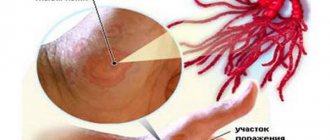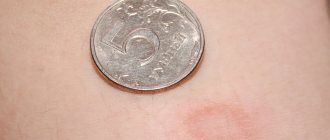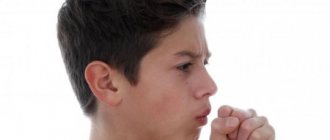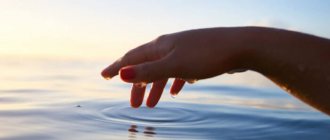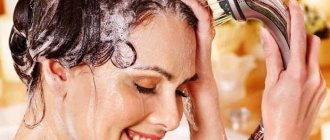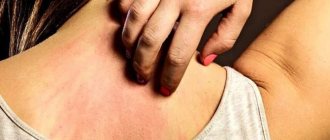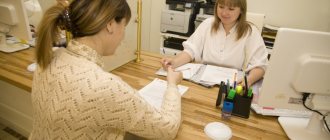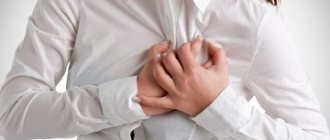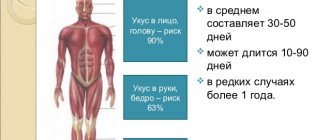Solar lichen
Solar lichen is a skin disease that is fungal in nature.
During this disease, hyperpigmentation with signs of peeling appears on the surface of the skin. This disease often affects people under 30 years of age. The name of this disease appeared due to the fact that it manifests itself in spring and autumn. Therefore, it is classified as a seasonal disease.
Under normal conditions, pityriasis versicolor is characterized by low contagiousness: the disease is transmitted from a sick person to a healthy person only through prolonged and close contact. The risk of developing the described pathology largely depends on the presence or absence of factors that create a favorable background for infection in the body.
Before starting treatment for solar lichen, it is necessary to consider the peculiarities of its course, provoking causes and characteristic symptoms.
What it is?
Sunburn is a disease caused by a yeast fungus. Such pathogens are called opportunistic pathogens because they are on the skin, but do not cause harm to it. Due to their nature, they can reproduce under favorable conditions: excessive sweating, hormonal diseases, chronic diseases.
There are 3 types of pityriasis versicolor, which depend on the fungus: Pityrosporum ovale, Pityrosporum orbiculare, Malassezia furfur. They move from one form to another.
Reasons for development
Dermatologists agree that the stratum corneum of the epidermis and hair cuticles are affected due to the action of fungal microorganisms from the genus Pityrosporum and Malassezia. They are transmitted only through long-term and close contact between a sick person and a healthy person. Solar lichen is usually considered to be less contagious.
The likelihood of infection is largely determined not by contact with infected people, but by the general condition of the body. It may take several weeks from the moment of infection to the appearance of the first symptoms. If conditions are favorable for them, mushrooms begin to actively reproduce.
Provoking factors due to which infection may occur are as follows:
- Weak protective resources of the body;
- Obesity;
- Frequent colds;
- Uncontrolled use of antibacterial agents;
- Wearing synthetic clothing for a long time;
- The use of antibacterial gels that affect the composition of microflora and reduce the protective properties of the skin;
- Excessive exposure to ultraviolet rays during long-term and frequent stays on the beach or regular visits to the solarium. Hence the name “sun fungus” or “beach disease”;
- Excessive use of tanning products, which can provoke allergies and fungal growth.
Some dermatologists are inclined to believe that people with pulmonary tuberculosis and lymphogranulomatosis are more susceptible to solar lichen.
Symptoms
This type of lichen in humans can be easily distinguished from other types. The following main symptoms indicate the appearance of solar lichen:
- Spots with uneven but clearly visible edges appear on the human body.
- Patients often complain of pain.
- The spots may have a reddish or whitish color with a coffee tint.
- The surface of the lichen does not protrude above the skin.
- In the absence of proper treatment, the possibility of increasing the area of skin affected by the disease cannot be ruled out.
- Upon contact with clothing or friction, the upper part of the lichen peels off.
- Typically, the fungus develops on a person's chest, sides of the upper torso, abdomen, or neck.
- If lichen develops in children or adolescents, it may also be located on the legs or arms, head, or under the arms.
I would like to draw your attention to the fact that this dermatological disease is not accompanied by burning or itching. If the patient experiences these symptoms, this may indicate penetration of other pathogenic fungi onto the surface of the skin.
In addition, a clear sign of sun fungus is that the affected areas of the skin do not tan when exposed to sunlight.
When the first signs of the disease are detected, experts recommend immediately limiting sun exposure. The incubation period can last from 2 to 4 months. In this regard, lichen may already manifest itself in the cold season.
The solar fungus has the following stages of development:
- At the first stage, a pink spot up to 2.5 cm in diameter of different colors appears, similar in characteristics to lichen versicolor.
- At the second stage , the spot darkens, acquires a brown tint, increases in size, or several spots appear at once, merging with each other, forming a rather large lesion on the body.
- At the third stage , the spot grows, begins to itch, and peels off, with the crust coming off when scratched. The spot is similar to pityriasis versicolor on the body.
The manifestation of the disease does not cause any particular harm to the patient’s body, except for cosmetic discomfort.
Diagnostics
At the first signs of any pathological changes in the skin, you should consult a specialist. The dermatologist will conduct a visual examination and, based on the test results, make a diagnosis.
Only after this the specialist prescribes how to treat solar lichen.
In order to accurately determine the nature and nature of the pathological process, the doctor may recommend undergoing the following series of examinations:
- Balzer test. A small amount of iodine is applied to an area of skin, and in cases of lichen damage, it turns an intense brown color;
- Test for Beignet's sign. It is carried out by scraping the top layer of the epidermis;
- Diagnostics using a fluorescent lamp. The light flux is directed to the pigment spot, and the focus of the pathology is painted in dark brown, green or red tones.
All these studies are carried out against the background of a comparative analysis of the results obtained with the symptoms of diseases such as leukodermatitis, syphilitic roseola, leprosy and Giber's disease. If a specialist excludes all of the listed diseases, he will immediately prescribe a regimen and tell you how to treat solar lichen.
Photo of solar lichen
This is what beach lichen looks like during its first manifestations. The spots are small and differ in color from the main skin. Ringworm may appear in early spring or fall. At this stage, the disease practically does not cause any discomfort.
After the first contact with the sun's rays, when a slight tan appears, the affected areas are not pigmented and look lighter than the rest of the skin. Sometimes patients confuse sunburn with sunburn spots.
The scalp is affected much less frequently than the neck, chest, back or abdomen. This form is considered more the exception than the rule, but also requires proper treatment.
How to treat solar lichen?
Treatment of solar lichen is a very painstaking matter, it is carried out at home. There are a great variety of drugs, and only a dermatologist can select one or more that are suitable in this particular case.
Unfortunately, there are no universal combinations, but we will look at those medications that, according to real people, help.
Fungicidal preparations
These are fungal killers. They can be systemic (in the form of tablets or capsules) and local.
Fluconazole is used as a systemic drug. It is taken for 2 days, 150 mg. After a week, repeat 300 mg. This is where the treatment ends.
The following antifungal ointments are used to treat solar lichen: Clotrimazole, Nizoral, Lamisil, Exoderil. They are applied 1-2 times a day for a week, then a break is taken for a month, after which the two-week course is repeated.
If you need to treat an area on the head, it is first recommended to wash your hair with an antifungal shampoo (Nizoral, Dermazol, Perhotal, Sebozol), and then apply a fungicidal ointment to it.
Keratolytic drugs
These are products for exfoliating the surface layers of the skin along with the pathogen. These include 2% alcohol solutions of salicylic acid or resorcinol, 50% urea ointment, Arievich ointment. They are applied frequently - every 3 hours.
Such drugs are especially good in the initial stages of the disease. They can also be used together with antiseptic agents with antifungal activity: first, a keratolytic is applied to the lesions of lichen, and then iodine, a solution of fucorcin or Miramistin.
Preparations based on zinc pyrithione
Effective remedies for solar lichen are zinc-based medications: “Psorilom”, “Skin-cap”. The latter is available in the form of a cream (it is applied to the skin of the body) or a spray (it is better to treat the scalp).
Non-drug treatment
During the course of treatment, it is necessary to strengthen hygiene measures:
- take a shower twice a day, and then blot the affected areas with a clean towel (it is washed after each use);
- dress so as not to sweat;
- During treatment, avoid activities that will make you sweat;
- change your underwear daily, after ironing it;
- do not scratch the affected areas.
Folk remedies
In some situations, you can prepare special medicines to get rid of skin fungus using the following recipes at home:
- Sea buckthorn oil. Treat affected skin with undiluted product 2 times a day. You can add a few drops of healing oil to any nourishing cream and lubricate lichen spots. Sea buckthorn oil has a healing, soothing effect;
- Rosehip infusion. An excellent remedy that strengthens the immune system. Pour 2 tbsp into a thermos. l. fruits, pour in 0.5 liters of boiling water. After two hours, strain the infusion. Take half a glass orally twice a day. Some herbalists recommend treating spots with “sun fungus” with infusion; wild or horse sorrel. Finely chop a bunch of leaves and combine with a tablespoon of sour cream. Apply the paste onto the stains and wash off after 15 minutes;
- Apple vinegar. Only a high-quality product is suitable for treating lichen spots. Every three hours, wipe away any blemishes on your body with apple cider vinegar. Watch the reaction. If itching or severe peeling occurs, stop the procedure;
- Rosehip oil. Buy healing oil at the pharmacy. Apply to affected areas twice daily.
Despite the fact that a disease such as solar lichen does not cause serious consequences for the patient himself and is not dangerous for others, it must be treated immediately after detection.
Otherwise, it will spread very quickly throughout the body and become a real disaster, especially for women.
Widespread lichen can be extremely difficult to get rid of, so try not to let the situation get worse.
Prevention
To prevent this disease, it is recommended:
- do not overexpose yourself to the sun;
- be sure to use sunscreen;
- before sunbathing after swimming, the skin must be wiped with a towel, only then exposed to the sun;
- observe safe hygiene measures to avoid catching the fungus from other people: do not use other people’s towels, be sure to lay your own bedding on the sunbed, do not lie on bare sand;
- wear clothes made from natural fabrics.
You can cure this disease using traditional methods, but it is better to entrust the treatment to proven pharmaceutical antifungal drugs, which will be selected by a dermatologist.
Source: https://doctor-365.net/solnechnyj-lishaj/
Treatment with folk remedies
By following all the doctor’s recommendations, you can also add traditional methods of struggle to the course. The key word here is “add,” because some people try to completely replace drug treatment and then wonder why it doesn’t produce any results. Dermatologists are well aware of all existing folk remedies. Therefore, you should experiment with herbs only after consulting a doctor.
Do not forget that the main treatment is antifungal ointments, and, if necessary, other medications. Grandmother's recipes can only be auxiliary means.
The most effective and years-tested recipes against sun lichen:
- Sea buckthorn oil. All affected areas of the skin are treated with this oil twice a day. If desired, you can add a few drops to the product you are using. It is widely known that sea buckthorn oil heals wounds well.
Rosehip infusion. Everyone knows that rosehip strengthens the immune system. For two tablespoons of rose hips you will need 0.5 liters of boiling water. So it should stand for several hours. The finished infusion is consumed orally, half a glass twice a day, and you can also lubricate the affected areas of the skin.- Sorrel. Clean sorrel leaves are chopped very finely and turned into pulp. The resulting mass is applied to sun spots and kept for 15 minutes;
- Apple cider vinegar. This remedy should be used with caution. When treating stains, purchase only high-quality vinegar. Lubricate the affected areas of the skin every three hours, but watch your body’s reaction the first few times. If itching, burning or other unpleasant symptoms appear, stop this procedure immediately.
- Rosehip oil. It can be purchased at any pharmacy at an affordable price. Lubricate the skin twice a day.
Solar (beach) lichen: causes, symptoms and treatment
Solar lichen is a skin disease that is fungal in nature. During this disease, hyperpigmentation with signs of peeling appears on the surface of the skin. This disease often affects people under 30 years of age.
The name of this disease appeared due to the fact that it manifests itself in spring and autumn. Therefore, it is classified as a seasonal disease. Before starting treatment for solar lichen, it is necessary to consider the peculiarities of its course, provoking causes and characteristic symptoms.
Causes
Why does solar lichen appear? According to many scientific studies, damage to the stratum corneum and hair cuticles is caused by fungal organisms belonging to the genus Pityrosporum and Malassezia. Transmission of pathogens occurs during close contact of a sick person with a healthy person. This disease is included in the group of low-contagious diseases, therefore it is considered less contagious.
Important! Typically, after infection, it may take 2-3 weeks for characteristic spots to appear. And if favorable conditions are created, the active development and reproduction of fungi can begin.
Provoking factors include the following:
- decreased protective functions of the body;
- the presence of vegetative-vascular dystonia;
- diabetes;
- obesity;
- this lesion occurs with frequent colds;
- uncontrolled use of antibiotic drugs;
- wearing items made of synthetic material for a long time;
- the use of antibacterial gels that disrupt the microflora and also reduce the protective properties of the epidermis;
- may manifest itself with strong sweat separation or changes in its composition;
- use of inappropriate cosmetics for skin care;
- increased exposure to ultraviolet rays with frequent visits to the solarium, prolonged exposure to the sun, for example, on the beach. For this reason, this disease is called beach lichen;
- increased use of sunscreen, which causes allergic reactions that provoke the growth of fungi.
Features of treatment
Despite the fact that this skin lesion has pronounced characteristic signs, it is not recommended to undertake independent treatment methods. It is imperative to undergo an examination, during which the doctor can accurately diagnose and prescribe an effective remedy to eliminate the fungus.
First you need to go see a dermatologist. In addition to a visual examination, the doctor prescribes additional tests:
- carrying out dermatoscopy of spots of solar fungal infection;
- fluorescent diagnostics is prescribed. Using a Wood's lamp, you can determine the presence of fungi on the surface of the skin;
- a Balzer iodine test may be performed. After this test is performed, the affected skin appears much darker than the unaffected areas;
- to identify the causative agent of the disease, a microscopic analysis of the contents from the stain area is performed;
- It is necessary to perform a general blood test.
Drug treatment
It is important to start treating this skin disease as early as possible. If treatment therapy is started right from the first days of the appearance of skin lesions, then the disease can be eliminated within 2 weeks. During this period, it is recommended to isolate the patient from healthy people so that he does not inadvertently infect them.
Source: https://www.LishayaNet.ru/lishai/chem-lechit-solnechnyj-lishaj.html
Causes
Sunburn is caused by a skin yeast fungus. Once in the epidermis, the fungus disrupts the synthesis of melanin. Therefore, under the influence of ultraviolet radiation, the pigmentation of the skin changes, which leads to the appearance of multi-colored spots. The sun serves as a catalyst that accelerates the growth and reproduction of fungi.
The most common causes of fungus:
inherited predisposition;- increased blood sugar;
- radiation;
- long-term use of steroids.
The disease is considered non-contagious. But through direct contact with the affected area, the fungus can be transmitted.
Pityriasis versicolor often occurs due to the immunodeficiency virus, diseases of the endocrine system and digestive organs. Many problems associated with dysfunction of internal systems and organs inevitably affect the skin.
Synthetic clothing can also cause stains.
Solar (beach) lichen: treatment, at home, ointments
.
Many people have heard about the dangers of direct sunlight. Those who like to soak up the scorching sun in the summer should be prepared for the fact that, in addition to burns and sunstroke, there is a possibility of getting solar lichen.
Sunburn affects tan lovers
Description of the problem
This is a fungal disease that affects the skin. The skin of an infected person becomes covered with small, clearly defined red, yellow, milky or brown spots. Because of such a variety of shades, it is also called versicolor.
Located on the shoulders, chest and armpits. The number of spots on the body can increase due to drops of sweat that fall on healthy areas of the skin. The number of foci of infection can increase in a very short period of time if treatment is not started in time.
The concept of lichen solaris is more often used colloquially, but doctors call it pityriasis versicolor. The fungus appears among beach lovers who neglect sun protection and personal hygiene. Places covered with lichen do not tan in the sun and look like light spots. The disease is accompanied by itching, peeling and discomfort.
The disease is seasonal, most often occurring in spring and summer. In most cases, this problem is faced by young people under 30 who spend a lot of time in the sun.
The cause of the disease may be a weakened immune system of the body. If you suspect solar lichen, its treatment begins with a series of examinations and identification of the source.
The disease is typical for young people
Possible reasons
The reason why lichen appears in humans is long-term exposure to the sun or other sources of ultraviolet radiation. Affects the development and weakening of immunity. The main factors that contribute to the development of pityriasis versicolor:
- diseases of the liver, gallbladder, biliary tract;
- pathologies of the digestive tract;
- overweight;
- diabetes;
- hormonal imbalance;
- improper body care that disrupts the pH balance of the skin;
- increased sweating;
- stress;
- tuberculosis, HIV or AIDS.
Liver problems can cause shingles
Treatment options
Treating sun lichen is not a difficult task. If you don’t start the disease, you can get rid of it very quickly without making much effort. Stains can be treated with an aqueous 5% iodine solution, salicylic alcohol or ointment.
These remedies should help in most cases without taking pills or special ointments within 2-3 days. If the symptoms do not go away, then more serious treatment is prescribed. There are 5 types of drugs.
- Antimycotic agents. Available in the form of ointments, sprays, and shampoos. External agents are especially effective for the initial form of lichen and small infected areas of the skin.
- Animikotic tablets are prescribed if the previous treatment method has failed. They act not only on the site of infection, but also on the entire body, which makes it possible to eliminate the activity of the fungus from the inside.
- Antibiotics may be prescribed in case of a progressive fungus that has become infected. In this case, the affected areas may fester, and the drugs stop the development of bacteria.
- Antihistamines are prescribed to relieve itching.
- Topical antiseptics are prescribed at an advanced stage of the fungus. Their use is especially important for spots that become wet, itchy, swollen or cracked. These remedies help fight existing inflammation or prevent its occurrence. Such remedies include anti-inflammatory solutions, talkatives, ointment for sunburn, etc.
The most effective for sun lichen are tablets and ointments with antifungal properties. Their choice must be approached carefully and used only as prescribed by a doctor, because they have a number of contraindications.
Medicines
The most effective against fungus are Clotrimazole, Mycoseptin, Miconazole, Lamisil and salicylic ointment. An anti-lichen spray (Mikofin, Thermikon, Lamisil) also works well.
- In the treatment of solar lichen, the antifungal drug Fluconazole is effective. The composition includes the active substance fluconazole. It acts quickly, penetrating the blood and spreading throughout the body. Take 2 tablets of 150 mg once a week. Treatment lasts 2 weeks.
- Clotrimazole has a good therapeutic effect. Designed for external use. Available in the form of cream, lotion and solution. It is necessary to smear the affected areas twice a day.
- "Exoderil" destroys pathogenic fungi that cause infections of the skin and nails in humans. Available in the form of cream and solution. Both products are intended for external use. The drug prevents the formation of ergosterol, due to which the fungus actively multiplies in a favorable environment. Reduces inflammation and helps restore damaged skin. Regardless of the form of release, the product is applied once a day at the same time for 2-4 weeks.
- Triderm is used only in advanced cases of lichen. It has an antifungal effect and has an anti-inflammatory effect. A special feature of the drug is the presence of hormones, which is why the product has many contraindications. Available in the form of ointment and cream. More often, the first one is used to treat solar lichen; it has a softening effect and does not dry the skin. It must be applied 2 times a day for 1-2 weeks.
"Exoderil" helps destroy harmful fungi
Conclusion
Ringworm is not the most terrible disease, but it is extremely unpleasant. If spots appear on the body, this indicates disturbances in the functioning of the body.
Only a specialist can tell you how to treat them correctly after examining the person.
You should not neglect your health, self-medicate at home, and especially put off going to the doctor: the sooner you do this, the better it will be for your body.
Source: https://kozhmed.ru/lishaj/solnechnyj-lechenie.html
Systemic therapy
Aggravation of pathology due to the addition of a secondary infection and non-compliance with personal hygiene rules requires an integrated approach. In this case, in addition to local remedies, systemic and supportive therapy is prescribed. In some cases, even corticosteroid drugs (local and systemic) are prescribed.
Effective oral medications include:
- Ketoconazole.
- Itraconazole
- Rumicosis.
- Fluconazole.
- Nystanin.
- Orungamin.
- Mycozoral.
- Fungoterbin.
- Pimafucin.
The active substances included in the above tablets help destroy pathogenic microorganisms and reduce the inflammatory process. Oral medications are considered modern, highly effective medications that help fight the causative agent of fungal disease.
However, before using them, you should consult a specialist. Due to the presence of side effects, it is not recommended to take the pills for children, as well as women during pregnancy.
The effectiveness of treatment depends on timely consultation with a doctor. This is due to the fact that at the initial stage it is easier to eliminate the symptoms of the pathology, while in advanced cases it is much more difficult to remove the rash. And relapses in the latter case occur much more often.
How to treat sunburn at home
Solar lichen is one of the types of skin diseases. The dermatological disease, which got its name due to the increase in the number of patients in the autumn-spring period, manifests itself in multiple spots of various shades. The largest percentage of cases of the disease are recorded under the age of 30 years.
Symptoms of the disease
This form of lichen appears on the neck, chest, back and arms. The richer the tan color, the more noticeable the manifestations of the disease.
Signs of the disease are:
- the appearance of small spots that visually practically do not differ from areas of healthy skin;
- gradual merging of small spots into one large one;
- discoloration of the skin on the affected area of the skin.
Characteristic signs are: redness, soreness, peeling of the epidermis when the affected areas are rubbed.
Causes of sun lichen
Doctors cannot yet say with certainty what causes the appearance of this type of skin disease. Many believe that it is caused by exposure to ultraviolet radiation. Another reason is considered to be the entry into the body of a fungus that multiplies under the influence of sunlight.
Can shingles appear from the sun? Unfortunately yes. But this only happens when favorable conditions are created for the development of the disease. Provoking factors for the development of the disease are considered:
- decreased immunity;
- seasonal vitamin deficiency;
- hyperhidrosis;
- various disorders of the thyroid gland;
- renal failure;
- use of low-quality body cosmetics.
In the most severe cases, the damage spreads to large areas of the skin.
The following health problems also contribute to the development of the disease:
- vegetative-vascular dystonia;
- obesity;
- diabetes;
- indiscriminate use of antibiotics;
- colds.
To establish an accurate diagnosis, various studies are used:
- dermatoscopy;
- fluorescent diagnostics;
- manifestations of the disease under a special lamp can glow in certain shades and colors;
- Balzer's iodine test is also used.
Basic methods of treating the disease
How and with what to treat the symptoms of solar lichen? The most effective treatment methods are:
- local treatment with ointments;
- use of restorative therapy;
- folk recipes;
- disease prevention.
Various means are suitable for local treatment:
- Resorcinol alcohol;
- Terbinafine;
- Naftifin;
- Cycloperox.
How to get rid of it (solar lichen) using ointment? To do this, it is recommended to use several types of ointments:
- Salicilova;
- Sulfur;
- Lamisil;
- Mycozolon;
- Biphasalol;
- Naphthylene.
If ointments do not give the desired effect, the doctor may prescribe tablets with an antimicrobial effect. In some cases, injections may be used.
When developing a treatment regimen, the doctor must consider several factors:
- area of affected areas of the body;
- results of the obtained tests;
- individual intolerance to the components of antifungal drugs.
In addition to local treatment, general therapy is recommended in the most difficult cases.
How to apply lichen to eliminate the disease faster? The following drugs are used to suppress fungi:
- Ketoconazole;
- Itraconazole;
- Orgunal.
To restore pigmented areas of the skin, it is recommended to take Cycloserine.
Beach lichen in children
The manifestation of the disease in children is reduced to the appearance of multi-colored spots that are caused by a fungal infection.
The causes of the disease in children can be:
- allergic reactions to sunlight;
- prolonged exposure to open sun;
- weakened immunity and, as a result, respiratory diseases.
Treatment of beach lichen in children should include special medications, multivitamins, immune-boosting drugs and a varied diet.
In the absence of proper treatment, the disease can drag on and lead to unpleasant consequences in the form of:
- joining a fungal infection to a bacterial infection;
- weakening of the immune system due to taking antibiotics;
- increased risk of relapse.
Folk recipes
The use of non-traditional recipes can have a positive effect on the patient’s health. The most effective are:
- a mixture of salicylic acid and apple cider vinegar, which is used to wipe the affected areas;
- sea buckthorn oil. It can be used undiluted or added to a cream to lubricate rashes. It soothes the skin and promotes wound healing;
- Rosehip infusion has a strong immunostimulating effect. Rosehip oil can be applied to skin manifestations;
- horse sorrel is also used, which is finely chopped and mixed with sour cream to prepare a healing ointment. Treating the symptoms of sun lichen at home with an ointment has a strong effect if applied for 20 minutes every day.
People who are susceptible to skin irritations are advised to follow a number of simple rules:
- do not visit the solarium;
- do not use antibacterial soap and shower gel;
- do not sunbathe during hot hours and hide in the shade;
- do not go out in the sun without UV protection cream;
- after sunbathing you need to take a shower;
- use only an individual towel;
- do not sunbathe on open sand (only on the mat).
If you have a skin disease, you should stop using scrubs and peeling.
After therapy, you need to protect not only your face, but also your body, monitor your health, and do not wear synthetic things. In case of excessive sweating, you need to carefully treat the folds of the skin, use talc or powder, and treat them with a decoction of oak bark.
It is also important to promptly treat endocrine disorders and take care of the cardiovascular system.
Source: https://dermet.ru/kg_inf/lish/solnechnyj-lishaj.html
Prevention
If you like to sunbathe, then remember to be careful. The sun causes many skin diseases, including solar lichen. There is a small set of rules , the implementation of which will protect you from many skin problems:
- Try to go to the solarium as little as possible, or better yet, give up this pleasure altogether.
- You should not use antibacterial soaps or shower gels every day.
- During extreme heat, it is better to stay in the shade and take sunbathing in the morning and evening hours.
- In the summer, try not to go out in the sun without treating your skin with a special cream that contains UV filters. If you have undergone treatment for sun sickness, then try to apply the cream not only to the face area, but also to all other exposed areas of the body.
- Take more vitamins to strengthen your immune system.
- In extreme heat, choose clothing made from natural fibers.
- If you experience excessive sweating, then try to treat skin folds, apply talc to the armpits.
- Monitor the condition of your endocrine system.
Consequences
Beach sickness, or sun lichen, does not pose a threat to the life and health of the patient. At the same time, the course is quite long. It can last for several months or even years. Despite clinical recovery, relapses (recurrences of the disease) may develop.
I would like to note that exposure to sunlight (ultraviolet light) significantly speeds up the healing process. However, in areas of the skin where beach sickness rashes were located, a tan does not form and white spots remain. This pathological condition is called pseudoleukoderma. The natural pigmentation of the skin is restored within several months, or even years. It is not advisable to use additional cosmetic procedures aimed at eliminating pseudoleukoderma, since they are ineffective.

